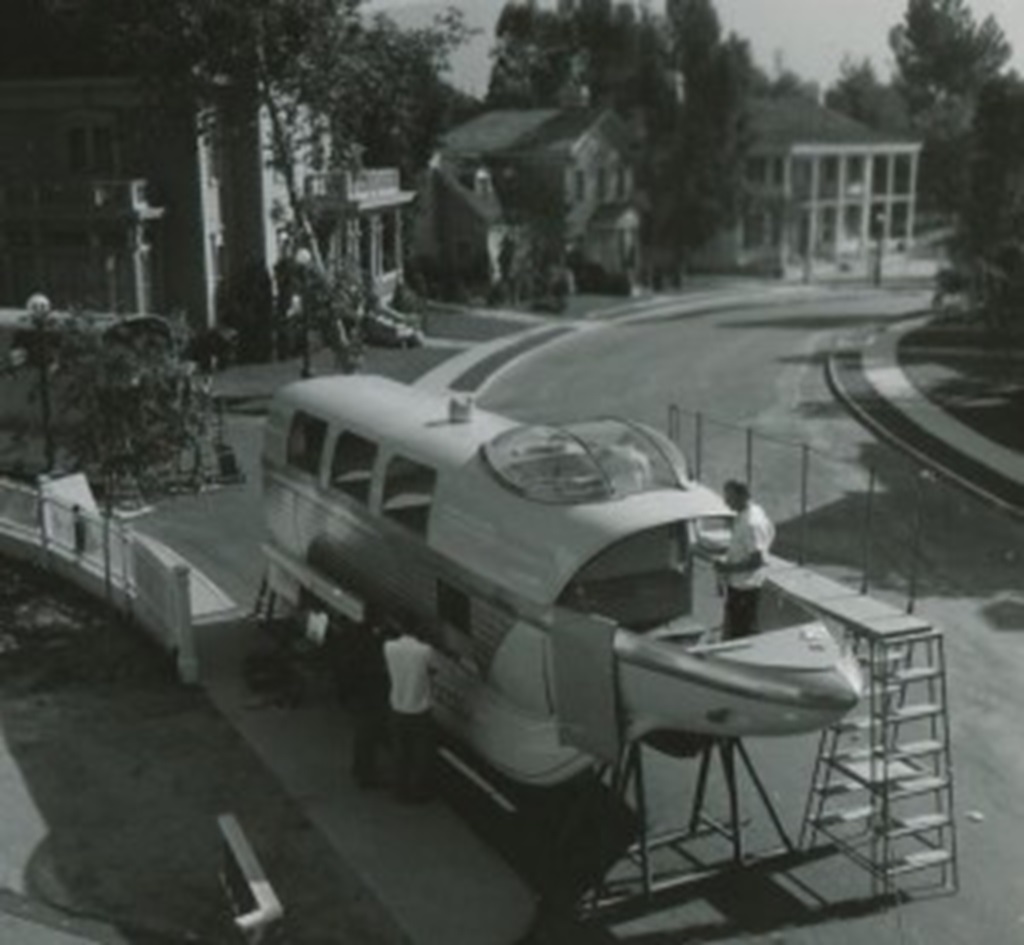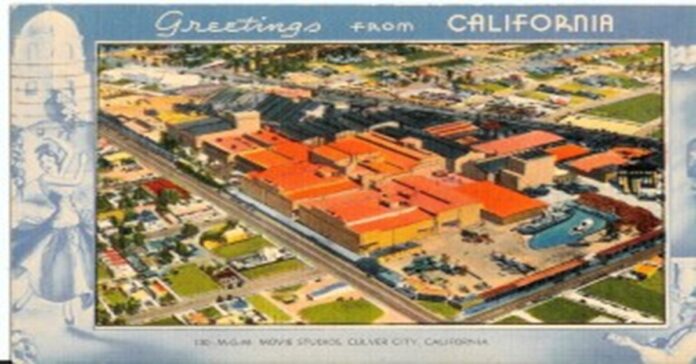The essence of the film industry lies beyond the movies themselves. Surprisingly, the movies we cherish are merely the outcome, a product of the intricate machinery that brings them to life. This perspective may seem unconventional, given the profound emotional significance we attribute to cinematic experiences.
Beyond the glamour of the movies lies the physical realm where our collective ideas about society, history, and geography have been crafted – the seven major film studios that have shaped the very fabric of our understanding of the world.
These studio factories, the birthplaces of cinematic narratives, have profoundly shaped our perceptions.
Despite the allure of Hollywood’s studios, access to these closed-off cities has always been limited, creating an air of mystery and folklore surrounding them.
Also Read More: Godzilla, Whitewashed: A Special Report
The Seven Sisters: The Mythical World of Hollywood Studios
The movie studio backlots, distinct to each studio, have been instrumental in creating secret cities that exist only to convey a superficial representation of real-world locations.
These sets, constructed to mimic various settings, have influenced our perceptions of iconic places like the Grand Hotel, often shaping our familiarity with these locations more than reality.
However, the signature architecture of these studios is gradually becoming a rarity, with backlots existing only in fragments amid the era of computer-generated virtual backlots.
MGM stands as the epitome of the prototypical backlot, with its three distinct properties showcasing an array of meticulously crafted sets.
From man-made lakes and European districts to the industry’s most prominent “New York” street and a renowned St. Louis Street, MGM’s backlots exuded a nostalgic, heightened reality that could only be experienced within the studio confines.
The studio’s backlots were not just sets; they were living embodiments of an idealized past, meticulously planned and designed to surpass real-life experiences.
This journey through Hollywood’s mythical, mysterious studios offers a glimpse into the physical existence of these legendary spaces, transcending their cinematic representations.
Universal Studios, one of the earliest Hollywood backlots, was established in 1914 by founder Carl Laemmle and boasts 415 acres.
Situated on the side of a hill, the studio’s backlot has been constrained in size and shape due to the natural terrain, with residential streets and cities historically constructed along a narrow band of land between the hill and the Los Angeles River.
The front lot consists of 31 soundstages, post-production, and technical facilities, while the backlot features a reconstructed New York City and a small town street with a courthouse.

However, the evolution of backlot sets raises the question of when a structure transitions from the original to a new building or a copy.
The studio’s “Mexican Village” leads to Hollywood’s last surviving Western set, “6 Points Texas,” which exudes an authentic feel, evoking nostalgia for Hollywood’s impression of the Old West and the Western genre.
The remnants of a European Street and a New England fishing village further contribute to the studio’s diverse backlot offerings, showcasing a blend of historical and more recent structures.
With its rich history and varied set designs, the studio’s backlot offers a captivating exploration of Hollywood’s evolving cinematic representations and the enduring allure of its iconic backlot sets.
Hollywood Backlots: A Glimpse Behind the Scenes of Iconic Studios
Universal Studios, established in 1914 by Carl Laemmle, is situated on a 415-acre complex known for its iconic backlot, including the pseudo-Gladiator “Spartacus Square.”
While offering a grand backdrop for Hollywood tourists, the behind-the-scenes reality reveals remnants of discarded items and bustling traffic nearby, starkly contrasting the cinematic illusion.
Warner Bros., spanning 110 acres, stands as a traditional movie studio, boasting wide streets and orderly rows of soundstages that retain an air of classic Hollywood.
The studio’s backlot features diverse sets, including New York Burroughs, a European coastal area, and a mid-eastern/Arabic community, offering visitors a captivating journey through varied historical and themed environments.
Columbia Pictures, initially a low-rent studio, underwent a remarkable transformation under the leadership of Harry Cohn.
Despite its physically small lot, the studio’s evolution into a significant force in the industry reflects its resilience and determination.
The limited space led to the acquisition of a 40-acre ranch facility in Burbank, which became an intriguing satellite backlot featuring iconic residential homes that saw extensive use in features and television sitcoms.
In summary, these studios, each with its unique history and backlot offerings, have played pivotal roles in shaping the cinematic landscape and continue to captivate visitors with their rich heritage and iconic sets.

In 1934, with limited space at their main lot, Columbia Pictures purchased a 40-acre ranch facility in Burbank, unlike the expansive movie ranches of other studios.
Despite its modest size, this ranch became an intriguing satellite backlot featuring facades that have been used extensively over the years.
Notably, the set became iconic from the 1950s onward, serving as the backdrop for domestic-themed sitcoms produced by Screen Gems, Columbia’s television division.
The residential block at the ranch became a surreal city block where homes from various TV shows and films coexisted, creating a fascinating blend of fictional realities.
From TV’s Dennis the Menace to the house of Donna Reed, Blondie, I Dream of Jeannie, Father Knows Best, Bewitched, The Partridge Family, Gidget, and Hazel, this set hosted many iconic homes.
1999, the entire block starred in the feature film Pleasantville, adding to its eclectic history.
However, the turmoil in the movie industry during the 1970s took its toll on Columbia, leading to significant changes.
In 1972, the studio’s original lot on Gower Street was partially vacated by new management and briefly transformed into a tennis club.
Ultimately, in 1998, Columbia Pictures relocated to the old MGM Lot One, while the Columbia Ranch remained part of Warner Bros., where it continues to hold its unique place in Hollywood’s history.
Despite its limited space and budget, this ranch facility’s evolution into a distinctive satellite backlot underscores its enduring significance in shaping the visual landscape of numerous productions.
In January 1931, Columbia Pictures purchased another studio complex in Culver City, fortifying its assets with 11 soundstages and a spectacular standing backlot.
The studio also expanded its footprint by acquiring 88 additional acres in Encino, San Fernando Valley, in 1937.
However, postwar challenges led to selling its Hollywood lots to General Tire and Rubber in 1955, ceasing active production.
Subsequently, Lucile Ball acquired the studio for her Desilu production company in 1956.
Adjacent to Columbia was Paramount Pictures, which purchased the RKO property in 1967, integrating the two lots into a single 65-acre compound.
The studio’s location in the heart of Hollywood limited its ability to expand, leading to a relatively stage-bound production style with few exteriors.
To compensate for this, Paramount purchased a 2,400-acre ranch near Malibu in 1927, providing sets for various productions.
The primary backlot area at Paramount, featuring a small-town business district and a Western street, was a notable feature until the mid-1970s.
The studio’s “New York Street,” covering five acres with distinct districts, became an impressive set.
However, the surviving version is a replica of the original, which was destroyed in a fire in 1983 but later rebuilt in 1991.
The studio’s enduring influence is underscored by the fact that the South LA community of Paramount was founded in 1946 and was named after the studio, reflecting its significant impact on the local area.
Overall, Paramount’s history and evolution reflect its enduring legacy in the Hollywood film industry, from its stage-bound productions to the expansion of its backlot facilities and its lasting influence on the surrounding community.
Twentieth Century-Fox: A Studio with Vast Ambition
Twentieth Century-Fox, situated in Century City, west of Beverly Hills, rivaled MGM in size, ambition, and geographical location.
The studio, encompassing almost 300 acres at its peak, boasted a front lot exquisitely landscaped and ornamented with ornate carving.
The backlot, known for its diverse sets, featured a range of locales, including a French village, a Roman slave market set, a colonial home, a Spanish street, a Swiss set, a German village, and more.
The East Lot, housing the “New” New York Street, a railroad section, a compound or fortress set, and a vast desert section, also featured the Chicago set from In Old Chicago (1938).
Additionally, Paramount maintained a ranch near the Paramount Ranch in Malibu, which they sold to the State of California in 1974.
However, the studio faced physical and financial challenges, leading to selling some of its Westside real estate and disassembling sets and landscapes.

By 1969, Fox had lost its backlot and was forced to construct elaborate sets on the front lot, signifying a poignant end to its once-vibrant backlot heritage.
Several minor studios and rental lots also constructed permanent exterior sets, such as the Republic lot in Studio City, now owned by CBS, which contained notable Western streets and a lagoon used in the TV series Gilligan’s Island.
Additionally, influential independent producers like Sam Goldwyn and David O. Selznick maintained standing backlots on their properties, with Selznick’s backlot notably used for filming Gone With The Wind.
The backlot portion of the studio, located near the end of Ince Blvd., was torn down in 1976 and is now an industrial park utilized for television production, marking the end of an era for Fox’s extensive backlot history.
In conclusion, Twentieth Century Fox’s ambitious backlot, with its diverse sets and storied history, played a significant role in shaping the visual landscape of numerous productions, leaving behind an enduring legacy in the Hollywood film industry.
Walt Disney’s Backlot Evolution
Walt Disney’s early studio lacked a standing backlot until the early 1950s, with most sets being animated cells.
The first Disney studio in Hollywood contained no facilities for live-action production.
Disney’s move to a 51-acre tract in Burbank in 1940 marked the beginning of live-action production, with the construction of soundstages and later stages to accommodate live-action features and television.
In 1959, Disney purchased a 700-acre ranch in Santa Clarita, known as Golden Oaks Ranch, where sets of predominantly Western variety were constructed.
On the Burbank lot, a California pueblo set was built in 1957, followed by a Western street in 1958 and a residential street in the early 1960s.
However, the only backlot staple missing from Disney’s studio was a small-town business street, which had been recreated at Disneyland.
In 1965, Disney ordered the construction of a small town American street, known as “Business Street,” near the northeast corner of the lot.
This street became Walt’s last personal addition to his studio until 1994 when it was rebuilt for a film and later demolished. Today, the original lot features a Midwest-themed boulevard built in 1997 called “Business Street.”

Overall, Disney’s backlot evolution, marked by the creation of diverse sets and streets, reflects Walt Disney’s enduring vision and longing for small-town America, immortalized in the various productions at his studio.
Hollywood’s backlots have either disappeared or been repurposed.
With the rise of virtual backlots, the future of physical backlots looks uncertain, marking the end of an era in Hollywood’s cinematic history.
Steven Bingen is a renowned historian, author, and former archivist for Warner Bros., known for his extensive contributions to Hollywood history.
His works, including “MGM: Hollywood’s Greatest Backlot” and “Warner Bros: Hollywood’s Ultimate Backlot,” offer in-depth examinations of legendary studio lots.
Steven’s significant contributions to Hollywood’s historical documentation have solidified his reputation as a leading authority on the subject.
Also Read More: Farmer Wants A Wife Season 2 Spoilers: Leaked Characters

